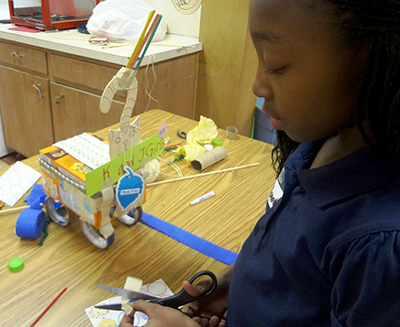4-H Science Part 1: Asking questions and discovering answers
Explore research-based best practices for engaging youth in science.

This article is the first in a series that will help engage youth in science exploration while using research-based best practices for engaging youth in science. The Journal of Extension article, “Embracing Scientific and Engineering Practices in 4-H,” explains the 4-H Science Initiative which has renewed efforts to strengthen 4-H programmatic and evaluation efforts in science and engineering education. The article explains the need to intertwine science process skills (the practices) with science content. In their report, “Framework for K-12 Science Education,” the National Research Council identifies the eight scientific and engineering practices. By engaging youth in science and engineering practices, you can help increase their curiosity, interest and motivation. The eight practices include:
- Asking questions (for science) and defining problems (for engineering)
- Developing and using models
- Planning and carrying out investigation
- Analyzing and interpreting data
- Using mathematics and computational thinking
- Constructing explanations (for science) and designing solutions (for engineering)
- Engaging in argument from evidence
- Obtaining, evaluating, and communicating information
 Asking questions and defining problems comes naturally to many youth. For example, youth participating in a recent 4-H science program called Junk Drawer Robotics had many questions and made many discoveries. Youth were given the overall challenge to create a car from at least five pieces of junk so that the car would roll freely down a ramp carrying a provided item. With no directions or recipe to follow, many questions arose like, “Will a pop top make a good wheel?” “What size car would travel the farthest down the ramp?” “Will this item stay in my car if I use duct tape?” and “Can I make my car good looking plus effective?”
Asking questions and defining problems comes naturally to many youth. For example, youth participating in a recent 4-H science program called Junk Drawer Robotics had many questions and made many discoveries. Youth were given the overall challenge to create a car from at least five pieces of junk so that the car would roll freely down a ramp carrying a provided item. With no directions or recipe to follow, many questions arose like, “Will a pop top make a good wheel?” “What size car would travel the farthest down the ramp?” “Will this item stay in my car if I use duct tape?” and “Can I make my car good looking plus effective?”
Following their questions, youth defined problems and solutions like, “I need a hole in this pop top to try it out as a wheel,” “I need to find how to make this small box heavier,” “Duct tape did not work – I need to find some sort of glue,” and “Glitter will not stick to my car body making it look cool.” Observing youth excitedly engaged in these and other scientific processes is rewarding for the educators, parents and 4-H volunteers.
Michigan State University Extension 4-H science and technology youth development programming offer many educational science opportunities. These science activities provide children with life skills in problem solving, critical thinking and decision making. The hands-on experiential learning is fun and educational.
For more information about 4-H learning opportunities and other 4-H programs, contact your local MSU Extension office.



 Print
Print Email
Email

